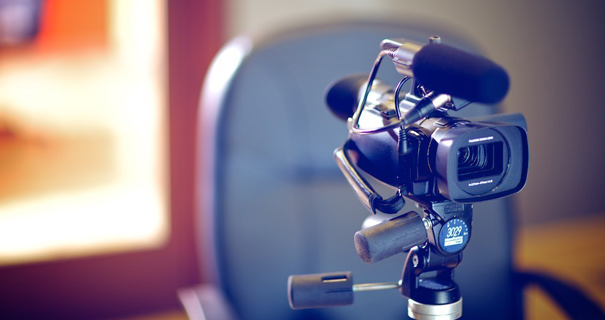Key Strategies for Creating Winning Trial Presentations in Court
Key Strategies for Creating Winning Trial Presentations in Court
Blog Article
Enhancing Your Lawful Strategy With Specialist Trial Presentations
In today's lawful landscape, the importance of expert test discussions can not be overstated. By transforming dense legal concepts right into appealing stories, practitioners can enhance juror comprehension and retention.
Value of Test Presentations
Trial presentations act as a critical element in the lawful process, properly bridging the gap between complicated lawful arguments and juror comprehension. The ability to boil down intricate legal concepts into accessible narratives is vital for jurors, who should make informed decisions based on the evidence presented. A well-crafted presentation not just clarifies the case yet also improves the persuasiveness of the debate, ultimately influencing the jury's assumption.
In an era where interest periods are restricted, the value of involving visuals and clear communication can not be overstated. Test presentations serve to catch jurors' passion and maintain their focus, enabling a deeper understanding of the truths and legal concerns handy. Moreover, they supply an organized framework that arranges the situation, assisting in sensible circulation and coherence.

Trick Elements of Effective Presentations
An effective presentation in a court room setting joints on several vital parts that jointly enhance its influence. Lawyers must boil down complex legal debates right into succinct, conveniently digestible factors to make certain jurors comprehend the core issues.
Visual help play an important function too, as they can considerably reinforce vital messages. Reliable usage of displays, charts, and diagrams can clear up intricate details and emphasize essential truths. Additionally, the speaker's shipment style is essential; certain, appealing interaction promotes reputation and preserves jurors' focus.
Last but not least, recognizing the audience is paramount. Tailoring the presentation to the jurors' histories and worths can promote a link that improves receptiveness to the disagreement. In recap, quality, narrative framework, aesthetic help, shipment design, and target market recognition are integral to crafting an efficient court presentation that resonates with jurors and supports the overarching lawful method.
Technology in Trial Presentations
Modern courts increasingly integrate visit this site right here modern technology to improve test discussions, building on the fundamental aspects of reliable communication developed through clear messaging and appealing narratives. The incorporation of audio-visual aids, such as high-definition projectors and interactive display screens, permits lawful teams to present proof in a more compelling fashion. This technology not only records the court's attention yet likewise promotes a far better understanding of complex information.

Digital devices, including presentation software application and digital display management systems, improve the company and retrieval of proof (trial presentations). Attorneys can rapidly reference More Info papers, photos, and video clips, making sure that vital information is readily obtainable throughout the test. In addition, making use of animations and simulations can clearly illustrate vital ideas, making them less complicated for jurors to grasp
In addition, courtroom modern technology promotes collaboration amongst legal specialists, enabling real-time adjustments to discussions based on jury reactions or unforeseen developments. The ability to adapt on the fly is important in maintaining involvement and enhancing arguments. As modern technology remains to progress, its role in test discussions will definitely expand, using ingenious ways to communicate efficiently and persuasively in the search of justice.
Narration Methods for Influence
Efficient storytelling techniques are critical in providing impactful trial discussions, as they transform intricate lawful arguments into relatable narratives. A well-crafted story astounds the target market, making it much easier for jurors to recognize and keep in mind bottom lines.
To produce an engaging narrative, attorneys should focus on developing a clear structure with a start, middle, and end. The start ought to introduce the case context and its relevance, while the middle elaborates on the core problems, weaving forthcoming and witness statements that support the debate. Conclusively, the finishing should reinforce the intended message, driving home the wanted result.
In addition, incorporating emotional elements can considerably boost the story's impact. By humanizing the case, lawyers can evoke compassion, enabling jurors to attach personally with the realities presented. Utilizing vivid images and narratives can also help in illustrating complex motifs, making them more concrete and unforgettable.

Tips for Application in Court
Implementing storytelling techniques in court requires careful preparation and execution to make sure that the story reverberates with jurors. Begin by determining the core message of your instance and aligning it with the psychological and accurate components that will involve the court. Develop a clear and compelling narrative arc that consists of an introduction, a development of conflict, and a resolution.
Make use of visual aids to more information improve storytelling; displays, timelines, and multimedia discussions can help highlight complicated principles and preserve juror passion. Exercise your delivery, ensuring that body movement, tone, and pacing are consistent with the emotional weight of your tale.

Conclusion
In conclusion, professional trial discussions play an essential role in enhancing legal techniques by efficiently communicating intricate debates to jurors. The assimilation of aesthetic aids, clear narratives, and psychological storytelling cultivates juror involvement and understanding.
Report this page